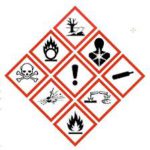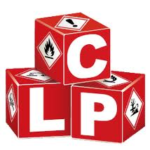Classification, Labelling & Packaging Regulation (EC) No 1272/2008
The GHS has been implemented in the EU by Regulation (EC) No 1272/2008 on classification, labelling and packaging of substances and mixtures (the ‘CLP Regulation’). The CLP Regulation entered into force on 20 January 2009. The deadline for substance classification according to the new rules was 1 December 2010; for mixtures, the deadline was 1 June 2015. The CLP Regulation replaces previous rules on classification, labelling and packaging of substances (Directive 67/548/EEC) and preparations (Directive 1999/45/EC) after this transitional period. The CLP Regulation ensures that the hazards presented by chemicals are clearly communicated to workers and consumers in the European Union through classification and labelling of chemicals.
In line with the GHS standard, CLP allows for the identification of hazardous chemicals and the communication of these hazards to users through labelling. It also provides the basis for safety data sheets (SDS) regulated under the REACH Regulation, and sets requirements for the packaging of hazardous chemicals.
 Hazard identification and classification: Hazard identification is the process by which information about the intrinsic properties of a substance or mixture is assessed to determine its potential to cause harm. If the nature and severity of an identified hazard meets the classification criteria in Annex I to the CLP Regulation, a certain hazard class will be assigned to the substance or mixture. There are hazard classes for physical hazards, health hazards, and environmental hazards.
Hazard identification and classification: Hazard identification is the process by which information about the intrinsic properties of a substance or mixture is assessed to determine its potential to cause harm. If the nature and severity of an identified hazard meets the classification criteria in Annex I to the CLP Regulation, a certain hazard class will be assigned to the substance or mixture. There are hazard classes for physical hazards, health hazards, and environmental hazards.
For most substances and mixtures, manufacturers, importers, downstream users and distributors must determine the hazard classification themselves. In certain cases, the classification of a chemical is harmonized at EU level. The list of harmonized classification and labelling is included in Annex VI to the CLP Regulation.
Labelling: Once the substance or mixture is classified based on its hazards, the hazards needs to be communicated to the user. The label of a hazardous substance or mixture includes pictograms, signal words, hazard statements, precautionary statements, and supplemental statements. Under the CLP Regulation, pictograms with a red diamond on a white background replace the orange squares from the old system.
Packaging: CLP sets general packaging standards to ensure the safe supply of hazardous substances and mixtures. In the case of certain hazards, substances and mixtures need to carry child-resistant fastenings and/or tactile warnings.
Classification and Labelling rules for international transport purposes are developed under the United Nations Recommendations on the Transport of Dangerous Goods with close links to the UN GHS. For more on classification and labelling for transport, see the website of DG MOVE.
Poison centres: The CLP Regulation requires EU countries to appoint bodies ‘responsible for receiving information on dangerous mixtures in order to formulate appropriate emergency measures (so called poison centres).
 Contact us for tailored & in depth support on CLP
Contact us for tailored & in depth support on CLP
